Tallinn defense
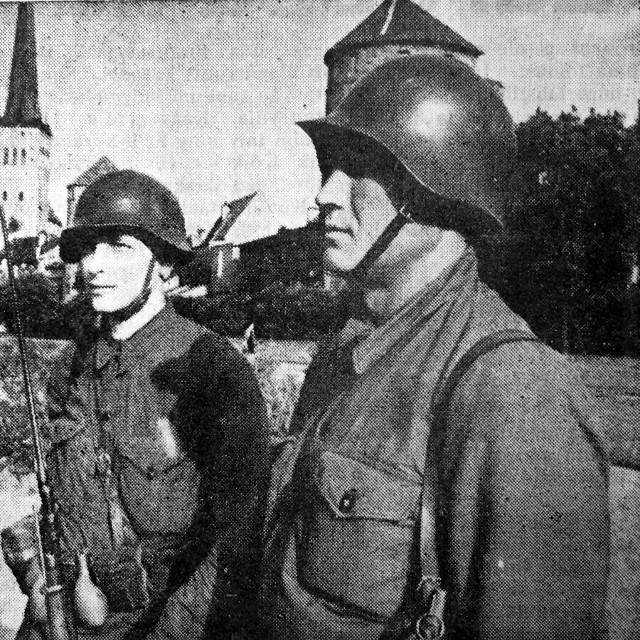
Defenders of Tallinn
Tallinn is a city and port with rich history, the capital of Estonia, has always been a significant political, economic and cultural center of Russia, and since 1940 also the main base of the Red Banner Baltic fleet THE USSR. But not only these factors determined its enormous strategic importance. There was another factor that already played an important role in the situation that had developed in the Baltic in 1914-1917, and which repeated itself in the summer of 1941 and demanded that the Soviet command and the forces of the North-Western Front make every effort to defend the city to the last opportunity : it was the geographical location of Tallinn at the entrance to the Gulf of Finland. Tallinn was, figuratively speaking, the key locking the sea gates to Leningrad, located 340 km east, which, in turn, was the primary strategic goal of the army group's offensive "North". At the same time, Tallinn was the central, and with the loss of Liepaja and Riga, the only supply point for the troops defending the Hanko Peninsula, the Moonsund Islands and submarines operating in the Baltic Sea. Without it, there could be no question of either the actions of the fleet on the high seas or raids. aviation to Berlin. And the defense of Hanko and the Moonsund Islands would lose all meaning.
The military significance of Tallinn was understood by both warring parties. Tallinn must be defended by all means, Stalin decided back in mid-July. This issue was not specifically discussed at the Headquarters, but it was clear that everyone agreed with Stalin's opinion: both in the Headquarters and in the High Command of the North-Western Direction, headed by Marshal Kliment Voroshilov. The Germans, in turn, immediately after the capture of Riga by the forces of the 18th Army, developed an offensive to the north with the task of occupying Estonia and Tallinn and thereby depriving the Soviet fleet of support on the shores of the Baltic Sea, and forcing it to self-destruct or surrender.
Danger hung over Tallinn as early as mid-July 1941, when Major General Ilya Lyubovtsev's 8th Army, battered in battle, with great difficulty stopped the enemy on the line Pärnu - Tartu - Lake Peipus. In the second half of July, the Germans managed to penetrate the Soviet defenses in the Maryamaa region, from where only 60–70 kilometers remained to Tallinn. After several days of bloody counterattacks, reinforced by amphibious assault on Virtsu, the Germans managed to push back to a line 100-120 kilometers from Tallinn. But the German command reinforced its grouping in Estonia with three infantry divisions of the army group "North"taken from the Novgorod direction, and on July 22 the 18th Army resumed its offensive along the entire front from Pärnu to Lake Peipus, aiming at the joint between the corps of the 8th Army.
At the end of July, the German command engaged another infantry division in the battles, and finally, on August 2, after stubborn fighting, the Germans managed to break through the Soviet defenses and on August 7 reach the Gulf of Finland in the area between the Yuminda Peninsula and the city of Kunda. The Soviet 8th Army, from August 2 under the command of Lieutenant General Pyotr Pshennikov, was cut into two parts: the 11th Corps, which held the defense on the isthmus between Lake Peipus and the Gulf of Finland, and the 10th Corps, which, together with the forces The Baltic Fleet and the militias fought on the distant outskirts of Tallinn, from Virtsu in the west, at the entrance to the Moonsund Strait, to the village of Järvakandi and further north to Kehra on the shores of the Gulf of Finland.
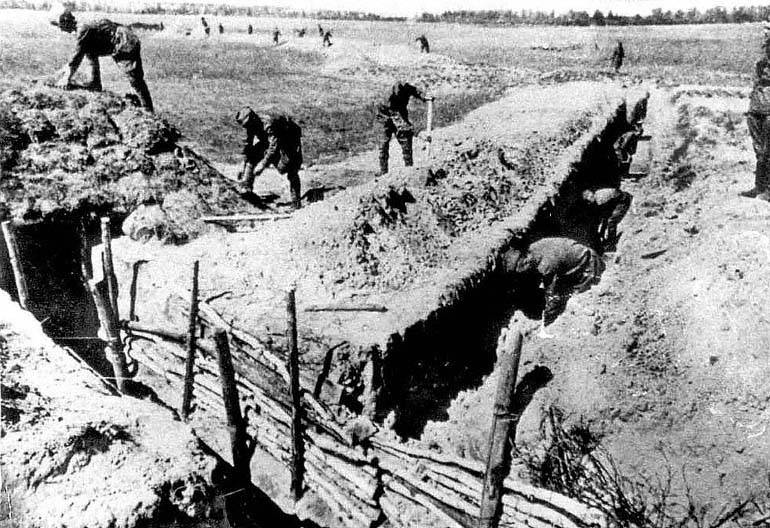
Construction of defensive fortifications on the outskirts of Tallinn
In Tallinn itself and on its near approaches, there was a feverish preparation for defense. Even before the war around Tallinn, on the shores of the Gulf of Finland, several coastal artillery batteries were installed to protect the base from the sea and several anti-aircraft batteries to protect against attack from the air, but no special attention was paid to the construction of fortifications from the land side, since no one from this direction did not expect any threat. In the course of the war, it was necessary to quickly make up for lost time, but there was not enough strength, funds, or, above all, time to create strong, long-term fortifications.
The preparation of the defense of Tallinn itself began in the first days of July with the creation of a perimeter of field fortifications, with a radius of 40 kilometers from the city, but the construction of fortifications around Tallinn itself started only in the middle of the month, when there was no doubt that the German troops would break through the defenses and approach the city .
Three lines of defense were built in three weeks: the first one ran at a distance of 9–12 km from the city and consisted of 7 defense nodes blocking all highways and railways leading to Tallinn. Each of these nodes, in fact, was a small fortified area with artillery and machine guns, dugouts, full profile trenches and anti-tank ditches, anti-tank gouges and hedgehogs, and the approaches to them were mined. The nodes were connected by trenches, anti-tank ditches and barbed wire. On the ground in front of the main line of defense, an intermediate line was built from various anti-personnel and anti-tank barriers. The second line of already direct defense of Tallinn passed along the outskirts of the city, and the third, built mainly from street barricades, was organized in the city center, around the port.
When German troops reached Tallinn on August 9, the construction of all three defense lines had not yet been completed. In addition, the fortifications could hardly be called permanent fortifications, but at least they could deploy the defense of the city. Much worse was the situation with the forces that were supposed to carry it out. Fighting continuously, the 10th Corps of the 8th Army on August 9 consisted of only 10 people. The commander of the Baltic Fleet, Vice-Admiral Vladimir Tributs, on August 898 suggested that Stavka transfer 13 soldiers and artillery from the Hanko Peninsula to Tallinn, but his proposal was rejected. Then began the formation of detachments of marines among the crews of warships, coastal and rear units. These forces were supplemented by some civilian volunteers.
As part of the preparations for the defense of Tallinn, the dismantling and export by sea to Leningrad of the most valuable equipment and materials also began. In July and the first half of August, goods worth 600 million rubles were transported. In August, after the rupture of land communications, part of the floating train was given over to the evacuation of the wounded. Between August 12 and 25, 5 wounded were evacuated to Kronstadt, and the evacuation was carried out under heavy cover of minesweepers and sea hunters.
Preparations for defense made it necessary to solve numerous issues at all levels of military and civilian administration that affect the serviceability of command, which was a very difficult task, since the Soviet leadership had no experience in this regard, and the defense of Tallinn turned into a complex land-sea operation involving all branches of the military and civil administration. The commander of the naval base was, by virtue of his official position, Vice Admiral Tributs, who reported directly to Marshal Voroshilov. Tributs was subordinate to all the naval forces, but the main role in the defense of the base was to be played by the ground forces.
And immediately a problem arose - who should command the defense? Army or Navy Commander?
The problem was solved only on August 17, when the 10th Corps was reassigned to Tributs, and the corps commander, Major General Ivan Nikolaev, was appointed his deputy for land defense. Nikolaev was directly subordinate to the commander of the land defense of the naval base, Major General Gavriil Zashikhin, who at the same time was the commander of the air defense of Tallinn. Zashikhin was subordinate to all parts of the coastal defense, anti-aircraft and coastal artillery, as well as naval artillery included in the base's land defense system. At the same time, the People's Commissariat of the Navy considered the possibility of moving the main command post of the Baltic Fleet from Tallinn to Luga or another area because of fears that the presence of the fleet commander and his personal participation in the defensive operation could adversely affect the actions of the Baltic Fleet as a whole. In the end, it was decided not to move the command post, so as not to negatively affect the morale of the defenders of Tallinn.
Further preparations included improving the system for using coastal and naval artillery in the land defense of the base. The leadership of the work was entrusted to the flagship artilleryman of the headquarters of the Baltic Fleet, captain of the first rank Nikolai Feldman, who became Zashikhin's deputy for naval artillery. Feldman was given two assistants: for coastal artillery - Colonel Mikhail Skorodumov, and for anti-aircraft artillery - Colonel Maxim Sivodedov. Under the guidance of these three specialists, a plan was developed for the use of coastal, naval and anti-aircraft artillery with a clear schedule for the priority of introducing into battle guns of different calibers, conditional call signs for calling fire, firing systems, etc. Nine firing positions were allocated and designated for ships, which were designated buoys having a topographic reference to the terrain. .
Each such position had a special passport, which indicated the firing sector, the calculated data of numbered targets, the communication scheme and the procedure for calling fire. Thanks to such training, it was possible to quickly change ships in firing positions. A ship leaving a firing position in order to go to sea or carry out other actions outside the base had to hand over the passport to the command post, where Captain Feldman handed it over to one of the coastal batteries or the flagship gunner of the Light Forces Detachment for transfer to the replacement ship. The effectiveness of artillery was ensured by 12 observation and correction posts, of which 5 were mobile, located among the groupings of ground units. In addition, seaplanes were allocated for reconnaissance in the interests of artillery and adjusting its fire. MBR-2 and fighters.
During the preparation of the defense of Tallinn, a system of smoke screens for land facilities, a port, coastal batteries and ships in firing positions, a plan for mining the port and a raid, as well as a plan for undermining certain objects in case the base was surrendered, were also developed. In short, a huge amount of work has been done on various issues of the defense of the city and port, including taking into account the experience gained in the defense of Liepaja.
For the defense of Tallinn, quite significant fleet forces were allocated, consisting of ships based in Tallinn itself and in the area of the Moonsund Islands. The largest unit was the cruiser Kirov with its 9 guns of 180 mm caliber and 8 guns of 100 mm caliber. Leaders were strong ships "Leningrad" и "Minsk" with main artillery of 5 guns of 130 mm caliber. The light force consisted of nine destroyers: "Severe", "Sharp-witted", "Fast", "Glorious" и "Proud" with artillery, 4 guns of 130 mm caliber, "Artem", "Volodarsky" и "Yakov Sverdlov", each with 4 100 mm guns, and "Kalinin", armed with 5 guns of 100 mm caliber. Artillery support was provided by gunboats. "Moscow", "Amgun" и M-8 with artillery, two 100-mm guns. Thus, the naval artillery supporting the ground forces consisted of 70 heavy and medium artillery pieces, including 9 180 mm guns, 30 130 mm guns and 31 100 mm guns. Small-caliber artillery consisted of 20 75 mm guns and 44 37 mm anti-aircraft guns.
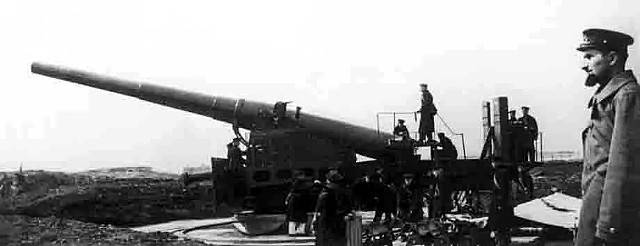
coastal defense gun
Coastal artillery consisted of two divisions and two separate batteries - together 9 batteries located along the coast and on the islands of the Gulf of Tallinn. On the island of Naissaar (Nargen), guarding the entrance to the bay, there were two batteries of 152-mm guns and one battery of 100-mm guns. On the island of Aegna (Wulf), off the eastern shore of the bay, there were also three batteries, only one consisted of 4 305 mm caliber guns, one of 4 152 mm caliber guns and the third of 4 100 mm caliber guns. One battery of 100 mm guns was installed to the west of Tallinn, and two (one of 152 mm and one of 100 mm) were installed on the Viimsi peninsula east of the port. In total, 36 guns were located in the area of the Tallinn Bay, of which 4 were 305 mm caliber, 12 were 152 mm caliber and 20 were 100 mm caliber.
Anti-aircraft artillery was located so that, in addition to air targets, they also hit land targets. The Tallinn base had 26 anti-aircraft artillery batteries in three regiments - together 120 anti-aircraft guns of medium and small caliber from 76 to 37 mm. The defense of the base also involved a naval battery of railway artillery (consisting of three 130-mm guns on railway platforms) and two improvised armored trains based on narrow-gauge trains, converted to transport 7 guns with a caliber from 100 to 37 mm. In total, the artillery of the Tallinn Naval Base had more than 200 guns with a caliber from 305 to 76 mm and 74 guns with a caliber from 45 to 37 mm. The artillery of the 10th Corps consisted of 64 guns with a caliber from 152 to 37 mm.
But the aviation located in the Tallinn area consisted of only 36 aircraft, of which 10 bombers, 18 fighters and 8 reconnaissance aircraft. They were based on the Viimsi and Paljassaare peninsulas, where unpaved runways were equipped for them.
The Tallinn defense began on August 7, 1941, when German troops reached the coast of the Gulf of Finland and cut the Soviet 8th Army into two parts, thereby depriving Tallinn of land communications with the rest of the country. From that day on, the city and its suburbs turned into one fortified area, completely surrounded by land and relying on supplies or evacuation only by sea.
But nobody thought about evacuation yet. Quite the opposite - the 10th Corps constantly counterattacked, trying to restore contact with the eastern grouping of the 8th Army. The first counterattack on August 7 from the Aegviidu region was repulsed. The second, reinforced by units of the Marine Corps, began on August 9. A railway battery took part in the battles, which was served by artillerymen from coastal batteries under the command of Captain Prokofy Zhivoder. From the side of the sea, the counterattacking units were supported by the fire of their guns by a detachment under the command of a captain of the second rank Neon Antonov, consisting of gunboats "Moscow" и "Amgun". Parts of the 10th Corps also received aviation support from the Tallinn airfields. Heavy fighting along the Narva highway continued for five days. During the first three days, the counterattacks managed to push the enemy back 12–22 km, but on August 12 the front froze, and repeated counterattacks did not bring any results, and on August 14 the 10th Corps went on the defensive. The front line around Tallinn on that day stretched for 180 km.
In the days that followed, the intensity of the fighting decreased. The Germans drew up their forces and took up convenient positions for the upcoming assault on the city. The command of the Soviet 10th Corps tried to use the respite in the fighting to strengthen their positions, but the troops were exhausted, and replenishment of losses was almost impossible. The battalions had to defend in sections 10-12 km long, and the gaps between the battalions, depending on the terrain, could be 5-8 km wide. The command tried to plug these gaps with detachments of the marines and militias.
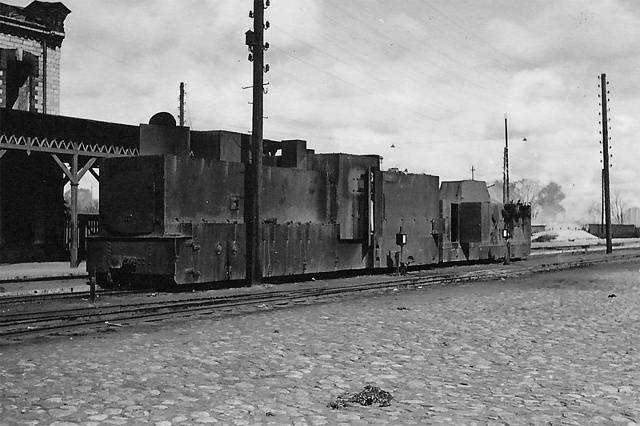
One of the narrow-gauge armored trains at the station in the port of Tallinn
Railway artillery provided invaluable assistance to the active units. On the site of the 16th division along the Tallinn-Tapa railway, a marine railway battery operated under the cover of a detachment of marines, Colonel Ivan Kostikov. With bold sorties, the detachment disorganized the battle formations and communications of the German 61st division advancing there. In the Rapla area, two improvised armored trains operating along the narrow gauge railway supported parts of the Soviet 10th division with their artillery fire and even raided the rear of the German 217th division, disrupting its advance. But, despite individual successes and losses inflicted on the enemy, the Soviet defense was unable to prevent the German assault on Tallinn.
On the evening of August 19, the Germans began a massive artillery preparation and, in the early morning of August 20, launched a general offensive. Heavy fighting unfolded along the entire perimeter of the front around Tallinn, but especially stubborn fighting took place in the eastern sector of the front, where the German 254th division dealt the main blow. The two regiments of the Soviet 22nd division defending there with great difficulty held back the superior enemy forces, supported by tanks and heavy artillery fire. In the southeastern sector of the front, the German 217th division delivered an auxiliary strike. And there, from the first hours of the offensive, stubborn battles unfolded. They weakened at night, but from the morning of August 21, the Germans carried out attack after attack. And although the Germans suffered heavy losses at the same time, they were able to bring more and more new units into battle and gradually move forward. The German command appointed August 24 as the last date for the capture of Tallinn, and the German troops at any cost, without looking back at losses, sought to break through the Soviet defenses. By the evening of August 21, the last units of the marines and the Estonian 1st working rifle regiment under the command of Captain Mikhail Pasternak were introduced into the battle in the direction of the main attack.
The Germans reached the line of the first line of defense on August 22. Fights broke out for fortified defense centers. The Germans threw all their tanks, artillery and aircraft into the attack, and from the Soviet side all anti-aircraft, coastal and naval artillery was involved. Anti-aircraft artillery supported the defending units with direct fire, destroyed tanks and stopped the infantry with barrage fire. During the fighting, some batteries in the first line of defense were surrounded, but did not stop firing in anticipation of counterattacks by the defenders.
On that day, not a single defense knot fell into the hands of the Germans. Of the forces of the fleet, the cruiser was the first to enter the battle Kirov; then the 334th coastal battery of 305-mm guns suppressed long-range enemy artillery in the eastern sector of the front in a few minutes.
Продолжение следует ...
Sources and literature:
N.G. Kuznetsov. In the fleets, combat alert... Military Publishing, 1971.
V. M. KRYLOV The Red Banner Baltic Fleet in the Great Patriotic War of the Soviet People, 1941–1945, Vol. 1: 10th Rifle Corps in the defense of Tallinn. Science, 1990.
V. F. Tributs. The Baltics fight... Military Publishing, 1985.
P. N. Pospelov and others. History of the Great Patriotic War of the Soviet Union, 1941–1945 in 6 volumes, Vol. 2. Military Publishing, 1961.
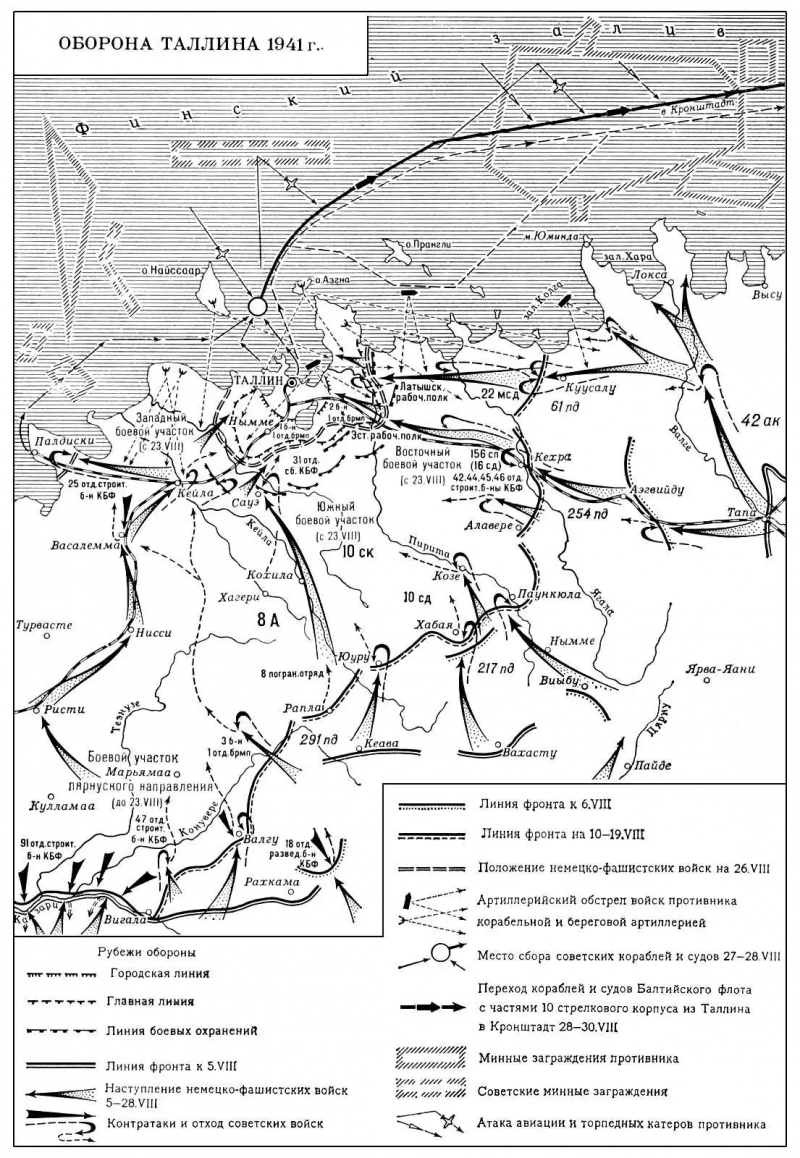
Information